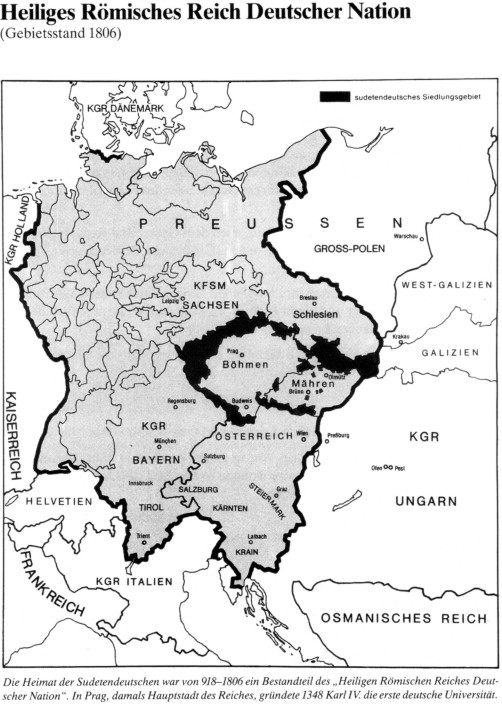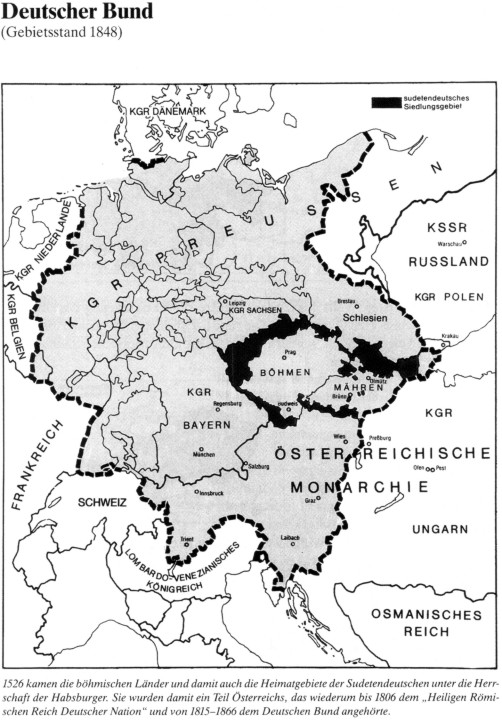|
8.
The death of Jan Hus and its consequences
Wenzel
inherited almost none of the good qualities of his father. He
hardly cared about the empire and spent most of his time in
Bohemia. In response to his conduct, the electors deposed him
and crowned Ruprecht, the Little of the Palatinate, and later
(1410) Wenzel's much younger brother Sigismund as German king
[crowned Kaiser 1433, King of Bohemia 1419]. Wenzel and
Sigismund played important roles in the Hussite revolution and
in the tragedy that followed. Kaiser Wenzel did nothing to
counteract the schism in the church, which arose when
alternative popes began to reside at Avignon. As a result the
church also suffered a loss of authority. Heretical movements
with underlying social causes were not only spreading across
Bohemia. The philosophic-theological foundations of the church
showed their first dissonances in the 14th century. Around
that time, King Wenzel had Johann von Nepomuk tortured and
thrown into the Moldau River. Jan Hus developed his ideas on
church reform along the concepts of John Wycliffe, and mainly
national minded Czechs from towns and rural areas became his
followers. He did not sympathize with the German reform
movement for new religiosity and inward-looking piety
appearing at that time. The differences deepened further when
many German mentors and students left the University of Prague
and continued at newly founded universities such as Leipzig,
Heidelberg, Tübingen or Vienna. The Council of Constance,
convened on insistence of King Sigismund, summoned Jan Hus
and, as he did not revoke his theses, condemned him and had
him burned outside the gates of Constance on July 6, 1415.
Word
of Hus having died a martyr's death aroused a powerful
national movement in Bohemia. The religious reform movements
in Germany as well as in Bohemia had evolved into a
Czech-national revolution. The flame lit with the stake at
Constance struck onwards with raging force when King Wenzel
died of a heart attack in 1419 and Kaiser Sigismund claimed
the Bohemian crown on grounds of the Luxemburg law of
succession. This expanded into the horrific Hussite Wars,
which brought dreadful sufferings on the people far beyond
Bohemia and Moravia, the effects of which need not be
described here. Although the linguistic divides had hardly
been shifted by the wars, the towns were Czechized, the
language of the legislative assembly became Czech; the Germans
were now grudgingly tolerated subjects, and the economic bloom
of the land had passed. The only winners were the landed
nobility who had broken the power of the royalty and of the
burghers. For a century they relished their power to the full.
The Czech people had taken dreadful vengeance for their
martyr, but this did not make them richer or happier. Here
perhaps lies one of the roots for the later misfortunes.
Holy
Roman Empire of the German Nation
(Geographical
extent of 1806) |
|

|
| The
home of the Sudetengermans from 918 to 1806 was part
of the Holy Roman Empire of the German Nation. In
1348, Karl IV founded the first German university in
Prague, then capital of the empire. |
German
Confederacy
(Geographical
extent of 1848) |
|

|
| In
1526 the Habsburg dynasty became sovereign of the
Bohemian lands which included the homelands of the
Sudetengermans. Thereby these lands became part of
Austria, which belonged up to 1806 to the Holy Roman
Empire of the German Nation and from 1815-1866 to
the German Confederacy. |
Under
Archduke Ferdinand of Austria (1503-64) the lands of Bohemia,
Austria, Hungary and Croatia were again unified and ruled by a
strong hand and remained so for 400 years, but thereby, the
Germans in Bohemia found themselves in a completely different
geographical situation. They had become the borderline
population of a multi-ethnic state. The more the center of
events moved from Prague to Vienna the more divisive became
the borderlines with Saxony and Silesia. A second far-reaching
development began around 1520 with Luther's rebellion against
the Pope and ended with the 30 Years War during which
especially the common man paid with life, blood and
possessions and had to change his faith or leave his home at
the whim of his master. Reformation and Counter-Reformation
took their toll. In the Sudetenlands, Catholicism gained in
influence and importance towards the end of the 16th century.
It was especially the work of the Jesuits with their modern
schools and educational methods as well as their reform of
church services and church music.
|